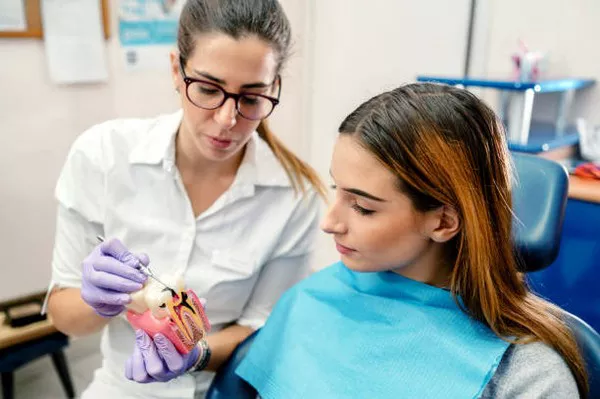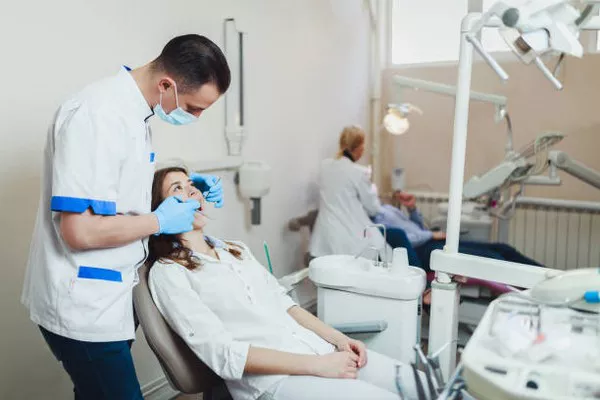Type of Braces
Clarifying the Compatibility of Whitening Strips with Different Types of Braces
When it comes to achieving a brighter, whiter smile, many individuals with braces may wonder if they can use whitening strips effectively. However, the suitability of whitening strips varies depending on the type of braces one has. Traditional metal braces, with their brackets and wires, may pose challenges for the application and effectiveness of whitening strips. On the other hand, clear aligners or lingual braces offer more flexibility, potentially making whitening strips a viable option.
Risks of Whitening with Braces
Navigating the Potential Pitfalls: Understanding the Risks Involved
While the idea of whitening teeth with braces may seem appealing, it’s essential to recognize the potential risks associated with this practice. One significant concern is the possibility of uneven whitening due to the brackets covering portions of the teeth. Since whitening strips adhere to the surface of the teeth, areas covered by brackets may not receive the same level of whitening as the exposed areas, resulting in an inconsistent smile.
Furthermore, individuals with braces may experience increased tooth sensitivity, and the chemicals present in whitening strips could exacerbate this sensitivity, leading to discomfort or pain. Additionally, improper use of whitening strips, such as leaving them on for too long or using them too frequently, may damage the enamel or cause other oral health issues.
Recommendations for Braces Wearers
Maintaining Oral Health and Tooth Color While Wearing Braces
Despite the challenges posed by braces, there are several recommendations that individuals can follow to maintain oral hygiene and tooth color throughout their orthodontic treatment:
1. Regular Dental Cleanings: Schedule routine dental cleanings with your orthodontist or dentist to remove plaque, tartar, and surface stains from your teeth. These cleanings are essential for maintaining overall oral health and can help prevent discoloration.
2. Proper Oral Hygiene: Brush your teeth after every meal and floss daily to remove food particles and plaque that can accumulate around the braces and contribute to staining. Consider using an interdental brush or water flosser to clean between brackets and wires effectively.
3. Avoid Stain-Causing Foods and Drinks: Limit your consumption of foods and beverages known to cause stains, such as coffee, tea, red wine, and dark-colored sodas. If you do indulge in these items, rinse your mouth with water afterward or brush your teeth to minimize staining.
4. Use Fluoride Toothpaste: Choose a toothpaste containing fluoride, which strengthens enamel and helps prevent tooth decay. Some fluoride toothpaste varieties also include whitening agents that can gradually lift surface stains without causing harm to braces.
Alternatives to Whitening Strips
Exploring Safe and Effective Whitening Methods for Braces Wearers
For individuals seeking to whiten their teeth while wearing braces, there are alternative methods available that are safe and compatible with orthodontic treatment:
1. Whitening Toothpaste: Consider using a whitening toothpaste formulated specifically for braces wearers. These toothpastes often contain gentle abrasives or hydrogen peroxide to remove surface stains without damaging braces or enamel.
2. Whitening Mouthwash: Incorporate a whitening mouthwash into your oral care routine to help freshen breath and reduce surface stains. Look for alcohol-free formulas that won’t irritate sensitive gums or increase tooth sensitivity.
3. Professional Whitening Treatments: Once braces are removed, consider professional whitening treatments administered by a dentist or orthodontist. These treatments typically involve the application of a bleaching agent to the teeth and may provide more significant and long-lasting results compared to over-the-counter whitening products.
4. At-Home Whitening Kits: Explore at-home whitening kits designed for post-braces use, which may include custom-fitted trays or whitening gels that can safely and effectively whiten teeth without compromising orthodontic appliances.
Consultation with a Dentist
Prioritizing Oral Health and Safety: Seeking Professional Guidance
Before attempting to use whitening strips or any other whitening products with braces, it is crucial to consult with a dentist or orthodontist. These dental professionals can evaluate your oral health, assess the condition of your braces, and provide personalized recommendations based on your unique needs and circumstances. They can also address any concerns or questions you may have about whitening while wearing braces and offer guidance on the safest and most effective approach.
Post-Braces Whitening
Achieving a Radiant Smile After Orthodontic Treatment
Once braces are removed and orthodontic treatment is complete, many individuals seek to enhance the appearance of their newly aligned smile with teeth whitening. Options for post-braces whitening may include:
1. In-Office Whitening: Schedule an appointment with your dentist for an in-office whitening treatment, which typically involves the application of a high-concentration bleaching agent and may include the use of special lights or lasers to accelerate the whitening process.
2. Take-Home Whitening Kits: Opt for a take-home whitening kit provided by your dentist, which allows you to whiten your teeth in the comfort of your own home. These kits often include custom-fitted trays and professional-strength whitening gel for safe and effective results.
3. Over-the-Counter Whitening Products: Explore over-the-counter whitening products, such as whitening strips, trays, or pens, that are specifically designed for post-braces use. While these products may not provide the same level of customization or professional supervision as in-office or take-home treatments, they can still help improve the brightness of your smile.
Conclusion
While using whitening strips with braces may present challenges and risks, there are alternative whitening methods available that can safely and effectively enhance the appearance of your smile during and after orthodontic treatment. By consulting with a dentist or orthodontist and following recommended oral hygiene practices, individuals with braces can achieve a brighter, whiter smile without compromising their oral health.
FAQs About Using Whitening Strips with Braces
1. Is it okay to use whitening strips with braces?
While it is possible to use whitening strips with braces, there are certain considerations to keep in mind. The effectiveness of whitening strips may be compromised by the presence of brackets and wires, leading to uneven whitening. Additionally, individuals with braces may experience increased tooth sensitivity, and the chemicals in whitening strips could exacerbate this sensitivity. It is essential to consult with a dentist or orthodontist before attempting to use whitening strips with braces to ensure it is safe and appropriate for your specific situation.
2. Can you whiten teeth while braces are on?
Yes, it is possible to whiten teeth while braces are on, but it requires careful consideration and consultation with a dental professional. Alternative whitening methods, such as whitening toothpaste or mouthwash, may be more suitable for individuals with braces as they are less likely to interfere with orthodontic appliances. It is essential to follow recommended oral hygiene practices and avoid stain-causing foods and drinks to maintain tooth color during orthodontic treatment.
3. Do whitening strips remove braces stains?
Whitening strips may help reduce surface stains on teeth, but they may not effectively remove stains caused by braces. The brackets and wires of braces can create areas of plaque buildup and discoloration that may be difficult to address with whitening strips alone. In some cases, professional cleaning or whitening treatments may be necessary to remove stubborn stains caused by braces.
4. Can I put my retainer in after using whitening strips?
It is generally recommended to avoid putting a retainer in immediately after using whitening strips. The chemicals present in whitening strips may still be active on the teeth, and placing a retainer over them could trap the chemicals against the teeth and soft tissues, potentially causing irritation or damage. It is advisable to wait at least 30 minutes to an hour after using whitening strips before inserting a retainer. Additionally, consult with your orthodontist for specific instructions based on your treatment plan and the type of retainer you have.































